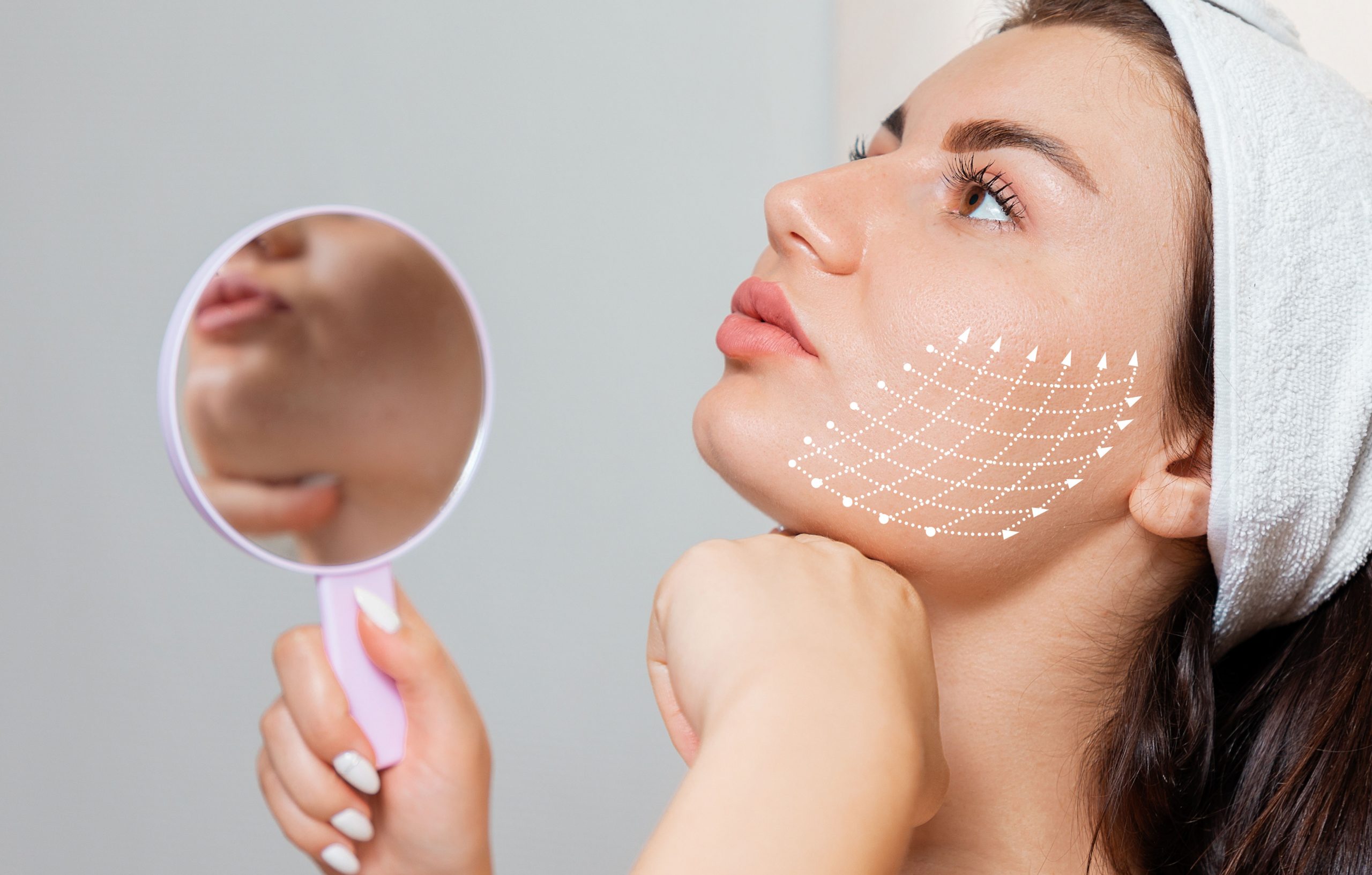A PDO or Polydioxanone thread lift is a procedure that uses dissolvable sutures to tighten and lift up the sagging skin. The sutures also stimulate the production of collagen – a protein that gives structure and adds elasticity to your skin. The procedure is non-surgical, minimally invasive, and can be completed in under 60 minutes.
Following proper aftercare guidelines is essential to get the most out of this revolutionary skin-tightening procedure. For this reason, we have compiled a list of do’s and don’ts to ensure proper aftercare for a PDO thread lift procedure.
Do’s:
- Sleep on your back to prevent the threads from moving or getting dislodged.
- Try to keep your head elevated using a pillow.
- Apply ice packs or cold compresses to reduce the initial swelling and bruising -but avoid the entry point area as the skin might be more sensitive.
- Apply sunscreen containing at least SPF 30+.
- Keep your skin hydrated and moisturized.
- Eat soft food to ensure minimal facial movements.
- Take Tylenol (as directed) in case of any mild discomfort. Some people might feel a stinging or pulling sensation after the procedure. It’s totally normal and taking Tylenol might help. These sensations will eventually subside within 2 to 5 weeks.
- Stick to prescribed antibiotics and antivirals as needed to minimize swelling.
- Take Arnica to help speed up the healing process of any bruising, particularly over the next 7-14 days.
- You can also apply bromelain to reduce the swelling that hasn’t gone down within the first 24 hours.
- Avoid direct sun exposure.
- Strictly adhere to all the aftercare guidelines provided to avoid any unpleasant side effects.
- In case of prolonged redness, swelling, or bruising or discharge from or around the entry points for the PDO threads, notify your treatment provider right away.
- Schedule regular follow-ups at Luxe Medical Aesthetics, Katy, Texas to monitor the progress of your PDO thread procedure.
Don’ts:
 Do not eat hard or solid foods that require a lot of chewing immediately after the treatment.
Do not eat hard or solid foods that require a lot of chewing immediately after the treatment. - Do not apply makeup for the first 12 hours after the treatment to allow the skin to heal properly.
- Do not apply ice directly on the points where threads have been inserted. The skin in the area will be a bit more sensitive and this action might cause frostbite.
- Do not take anti-inflammatory medicines such as ibuprofen or anticoagulants such as aspirin for at least 7 days after the treatment. (Be sure to get your attending physician’s approval beforehand.) These medications might increase the risk of bruising and bleeding after the treatment.
- Do not smoke or drink alcohol. Both alcohol and smoking might cause your blood pressure to increase significantly and delay the process of healing.
- Do not sleep on your belly or on your side at least for 1-2 weeks following the PDO thread procedure. Doing so might put you at the risk of accidentally displacing your threads.
- Do not engage in activities that might raise your blood pressure, such as taking hot baths, and going into saunas, etc. Heightened blood pressure might worsen redness or bruising within or around the treated area.
- Do not do heavy exercises, strenuous activities or weight lifting- at least for the first few weeks.
- Do not get treatments that involve lasers, high frequency waves or heat applied directly on the treated areas – for at least 10 weeks after the procedure.
- Do not get facials or facial massages. Best to avoid any pressure or any potentially irritating substances applied to the face for the first 10 days.
At Luxe Medical Aesthetics, we want to help you achieve optimal results from your PDO thread lift procedure. Follow the guidelines mentioned above and if you’re still unsure about anything, feel free to give us a call!





